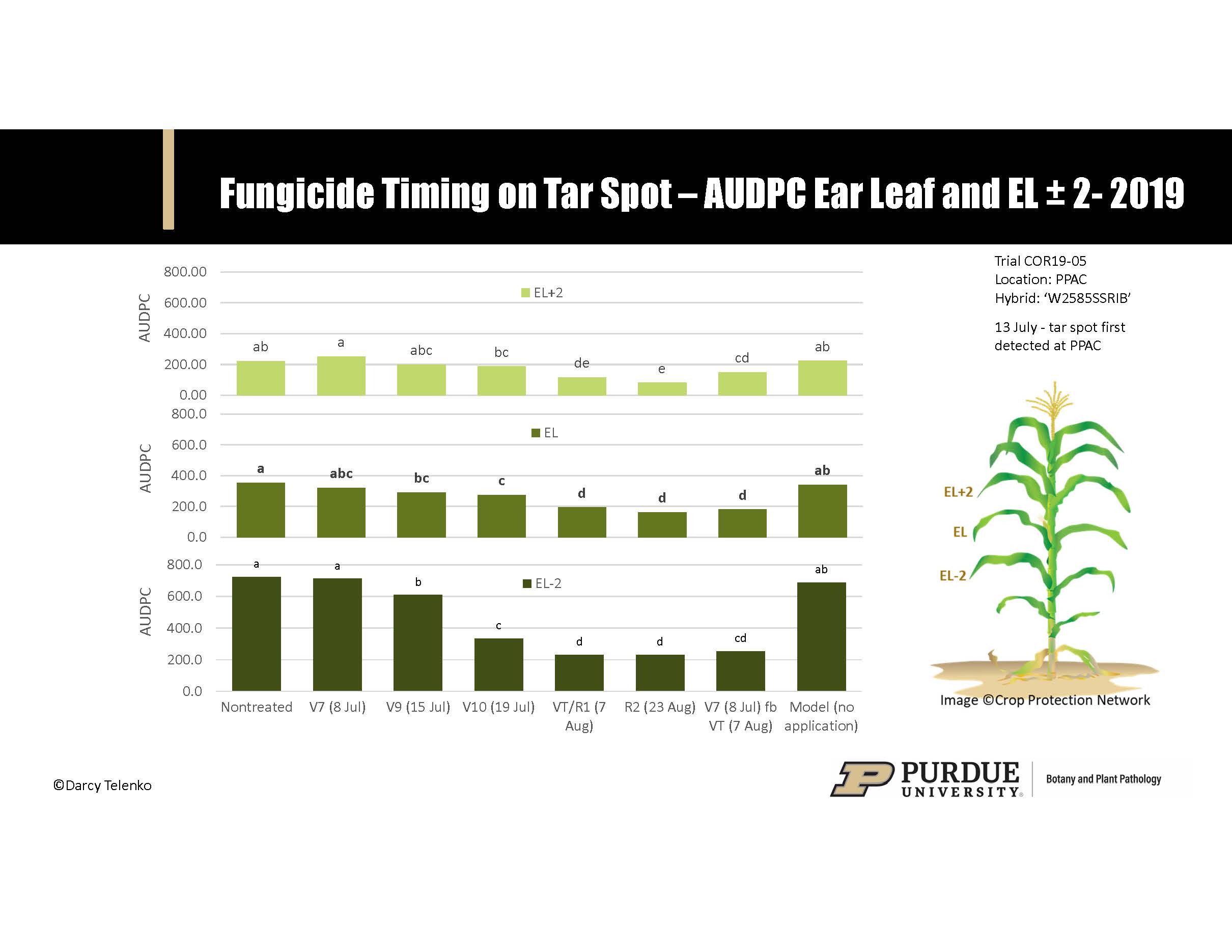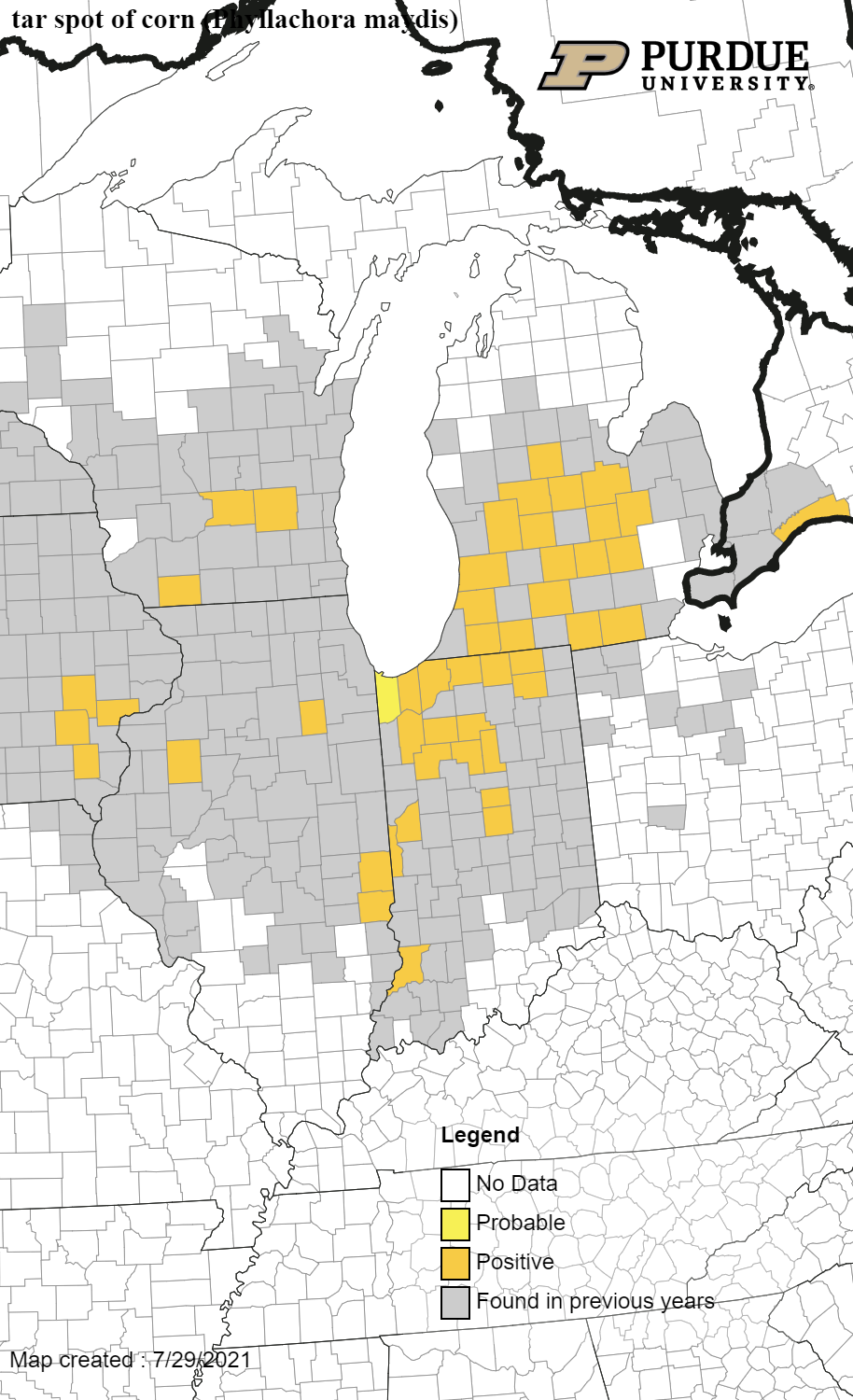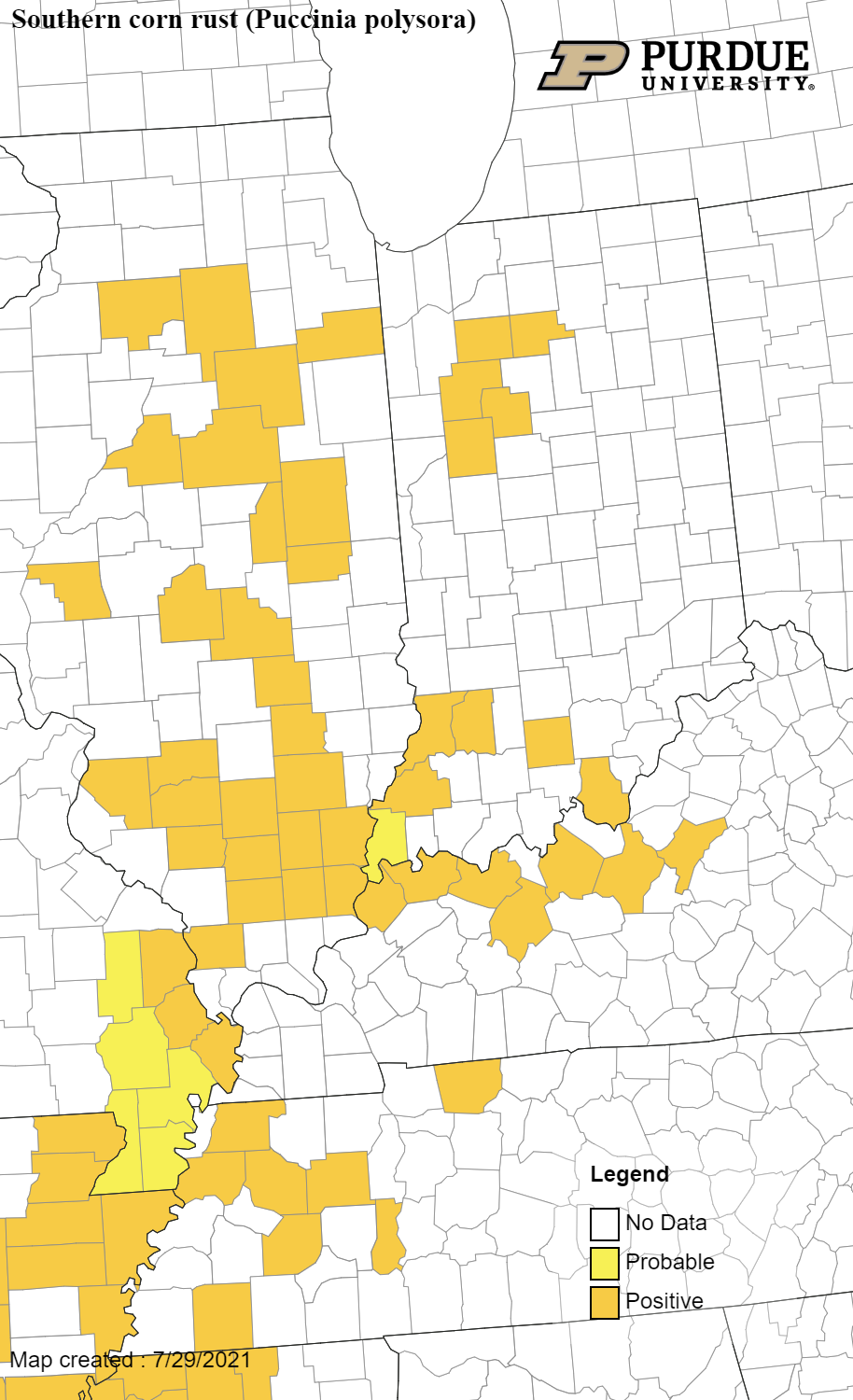Corn
Tar Spot – We continue to confirm counties with active tar spot. Seventeen counties have been confirmed as of July 29, 2021. These counties all had a previous history: Lake (suspect), Porter, LaPorte, St. Joseph, Elkhart, LaGrange, Noble, Jasper, Pulaski, Fulton, White, Cass, Miami, Tipton, Hamilton, Fountain, Vermillion, Knox (Figure 1). Gray colored counties on the map are those we have found tar spot in previous years. In northern Indiana, we are starting to find multiple fields with tar spot beginning to move up in the canopy and increased severity on the leaves. Please keep a close eye on your fields. Our research in 2019 and 2020 found that a well-timed fungicide application up to R3 will help reduced disease and protect yield. In 2019 and 2020 (Figures 2 and 3), fungicide applied at tassel/silk (VT/R1), blister (R2) or V7 followed by VT/R1 resulted in the lowest amount of disease develop in the crop canopy in both years.

Figure 2. Effect of fungicide timing on the development of tar spot on the ear leaf (EL) and the two leaves above and below the ear leaf (EL±2). Timing treatments included V7, V9, V10, tassel/silk (VT/R1), blister (R2), and a two-fungicide application program made at V7 followed by VT. AUDPC = by area under disease progress curve. Tar spot first detected in trial on 13 July.

Figure 3. Effect of fungicide timing on the development of tar spot on the ear leaf (EL) and the two leaves above and below the ear leaf (EL±2). Timing treatments included V8, V10, tassel/silk (VT/R1), blister (R2), milk (R3), dough (R4), dent (R5), and a two-fungicide application program made at V8 followed by VT. AUDPC = by area under disease progress curve. Tar spot first detected in trial on 28 July.
Southern Corn Rust. We continued to add new counties this week to the southern rust map in Indiana. There are now 10 counties confirmed including a pocked in west central Indiana (figure 4). These include Gibson, Knox, Daviess, Orange, Harrison, Pulaski, Fulton, White, Carroll, Tippecanoe counties. Keep scouting and if you suspect it, please send a sample to the Purdue Plant Pest Diagnostic Lab (PPDL). Southern rust can cause significant yield loss if it builds up to high levels during silking and corn fill. Therefore, it is very important to keep a close eye out for this disease this season to make timely management decisions.
We again are requesting if you have any suspect locations to please update us and send a sample for both tar spot and southern corn rust. I am especially interested in those counties we have yet to scout or receive a sample. Even if your county is yellow, I am also interested in learning if you have tar spot or southern rust on your farm and what you might be seeing – feel free to send me an email/photo at dtelenko@purdue.edu or call 765-496-5168.




